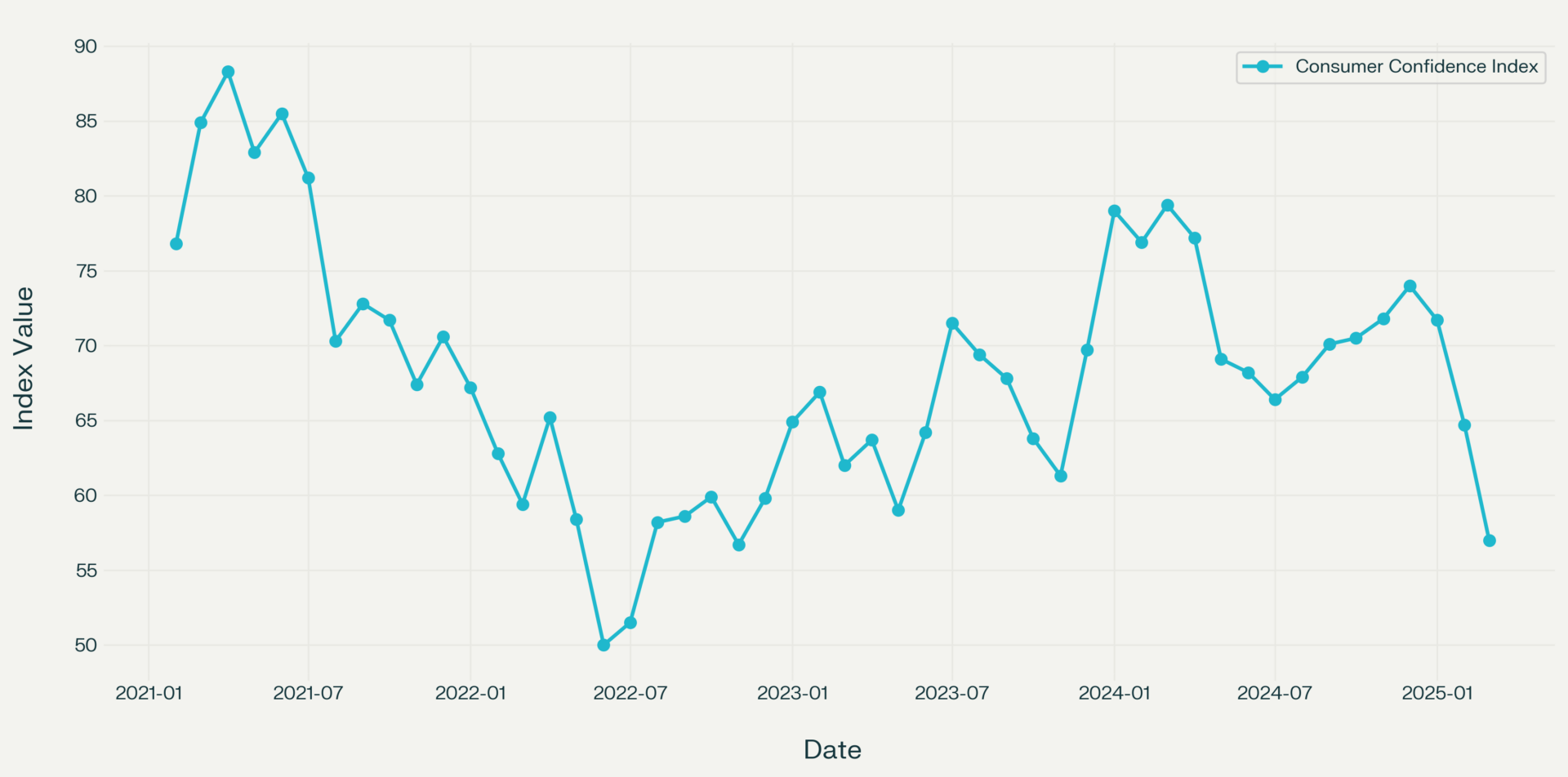In This Article

Every couple years, everything goes to hell—and your marketing system takes the hit.
Sales stall. Campaigns flop. Ads burn cash like wildfire. What worked before stops working, and suddenly you’re staring down a blank content calendar with a pit in your stomach and a pile of receipts in your hand.
Sound familiar?
Here’s the part no one tells you: disruptions aren’t the exception—they’re the rule. And if you’re still building your marketing strategy like you live in a stable world, you’re setting yourself up for a breakdown.
It’s time to shift from reactive to resilient. From winging it to wiring it. From chasing hacks to designing systems.
Let’s talk about how to disruption-proof your marketing with two nerdy-sounding concepts that will change your business life: systems thinking and Failure Modes Effects Analysis (FMEA).
Trust me—this is way more useful than it sounds.
Everyone’s Chasing Tactics While the Real Problem Is the System
Most business owners are duct-taping together strategies like it’s a marketing emergency room: one Facebook ad here, a webinar there, a discount code on Fridays, and a prayer to the algorithm gods. It’s like a thousand points of marketing that lead nowhere.

But when a disruption hits—like a pandemic, a market crash, a supply shortage, or your favorite VA disappearing—your system collapses. Why? Because you didn’t have one.
It’s like trying to fix a leaky faucet without realizing the whole water main is cracked.
You’re Already a Systems Thinker (You Just Don’t Know It Yet)
What is Systems Thinking?
Systems thinking is the ability to look at your business like a machine with many moving parts. Instead of blaming one broken piece, you look at how everything interacts. Marketing isn’t one tactic—it’s a network of activities. Marketing is a process. Marketing is a system.
The Weather Analogy
You already think in systems when you check the weather. If you live in Cleveland, you know not to put your snow boots away in March. Because you’ve observed the system: sun today, snow tomorrow, chaos always.
Same with business.
You live in an economic climate. You operate in a customer system. Your ads, leads, sales—they’re all part of a weather pattern. If you don’t understand how that system works, you’ll keep running outside in shorts during a snowstorm.
Get a FREE Custom GPT to Help You Run Your Marketing System
The “Murphy Proof” Your Marketing System GPT is your interactive guide to spotting weak points before they break. This smart, conversational tool walks you through a personalized risk analysis, helping you build a resilient marketing system that’s ready for anything—chaos, crashes, or curveballs. Plan smarter. Adapt faster. Stay in control.
Here’s What Systems Thinkers Do Differently
System thinkers understand the universal law that EVERYTHING is connected. We live in a global economy that operates like a mobile art installation; each piece is connected to another piece, as soon as you pull on one, the others start to move around.

Because it’s all connected, you need to understand the if/then relationships in your business and your marketing.
They identify patterns, not just problems.
Assuming you know the of/then relationships to different aspects of your business and your marketing, you’ll have magical X-ray vision to identify patterns.
For example, you need to know that we are a consumer driven economy. That means that as a small business, dependent on lead generation and new customers who can afford to and want to buy your stuff, you’ll want to track the Consumer Confidence Index (from the Conference Board). They come out with a new report every month.

If consumer confidence falls, that means that your customers are less likely to buy what you are selling because they are afraid to let go of money. They are afraid that the money they currently have may be better used on what they perceive as necessities rather than what they perceive as luxuries. In other words, if you sell something perceived as a “want” rather than a “need” – you can expect your sales to go down.
What does this look like in terms of marketing?
- Your traffic will drop because people aren’t searching for what you’re selling.
- Email opt ins are down
- Engagement is down
- Conversions are down
Heck – everything is down.
Does that mean you should do MORE of these things? Does that mean you should start posting on Instagram rather than LinkedIn? Not necessarily.
Using this example of only looking at consumer confidence, you might start looking at repositioning your product or service as a necessity rather than a luxury.
I’m over simplifying here, but I think you get the point. When you look at an entire system, you have to look at ALL the moving parts and how that might affect your business – and not just jump into doing random things.
This is almost like going to a foreign country where they don’t speak English and just speaker louder and more slowly.
They anticipate lag time.
Everything on this plane of existence has a lag time. In some systems – like pouring a glass of water, the lag time is almost immediate. In most systems, however, the lag time can be much longer – sometimes YEARS.
In sales and marketing, we talk about the selling cycle. That’s the time it takes from someone recognizing they need or want your product, to researching, to finding options, to choosing an option, and finally purchasing the product.
Purchasing toothpaste has a short lag time. Purchasing a million dollar piece of equipment has a much longer lag time.
As an entrepreneur, this means that you have to understand what the lag time is for every part of your business. That means that if you KNOW something is coming, you need to plan ahead to deal with that lag time.
The lesson here is not to give up too early. Don’t expect microwave results. Systems thinkers understand delay is built-in. Think: cruise ship, not kayak.
They account for domino effects.

When you make a change in one part of your business—like cutting ad spend—it doesn’t stop there. That decision ripples through your entire marketing system.
You might save money this month, but fewer ads mean fewer leads, fewer leads mean fewer conversions, and suddenly, you’re short on revenue next quarter.
This is the domino effect in action: one seemingly smart move topples multiple parts of your system. And if you’re not aware of what’s connected, you’ll face a series of unintended consequences that feel like random chaos—but are completely predictable if you’re looking at the full system.
Systems thinkers expect unintended consequences. They don’t just ask “What happens now?” They ask “What happens next… and after that?”
Design with disruption in mind.
You don’t scramble when chaos hits—you expect it. That’s what it means to build with disruption in mind. You assume things will go sideways at some point—because they always do. A tech breakdown, a supply chain issue, a sudden pivot in the market—it’s not a matter of if, it’s when.
So instead of creating brittle plans with single points of failure, you design your marketing system to bend, not break. You leave room for course correction. You create campaigns that can shift if one channel underperforms. You spread out your acquisition so you’re not dependent on one platform.
And here’s the key: you document your systems. When your VA gets sick or your ad account gets suspended, you’re not stuck starting from scratch. You’ve built in redundancy—processes someone else can follow, assets you can repurpose, backups ready to deploy.
This isn’t being paranoid. It’s strategic.
You’re not planning for if disruption happens. You’re planning because it will..
Disruptions—whether it’s a tech breakdown, team turnover, or a sudden drop in demand—aren’t surprises to a systems thinker. They’re part of the landscape. So instead of rigid, single-point solutions, design systems with slack, redundancy, and options. That means leaving room in the calendar for course correction. It means building customer acquisition through multiple channels, not just one. And it means documenting processes so someone else can step in when the unexpected happens.
Enter: FMEA, the Tool to Murphy-Proof Your Marketing
Back in my corporate days, we used a tool called FMEA—Failure Modes Effects Analysis. Sounds intimidating. It’s not.
It’s just Murphy’s Law, documented: “If something can go wrong, it will.” In other words, it’s the process (or system) you use to “Murphy Proof” your business.
FMEA says: Let’s list the things that could go wrong, rank how bad and how likely they are, and make a plan to fix or prevent them.
How to Murphy Proof Your Marketing
Step 1: List Potential Failure Points
Ask yourself:
- What if ad costs spike?
- What if your CRM crashes?
- What if people stop buying your offer?
Step 2: Score Each One
Rate on:
- Severity – How bad would it be? (1–10)
- Occurrence – How likely is it? (1–10)
- Detection – How easily could you spot it coming? (1–10)
Multiply the scores together: Risk Priority Number (RPN) = S × O × D
Higher RPN = more urgent to fix.
Step 3: Build a Solution Around It
Now create a safety net:
- Launch a pre-waitlist to validate demand.
- Add a backup CRM tool.
- Repurpose high-performing content instead of burning time on trendy tactics.
When you think this way, you stop being a firefighter and become a system architect.
Case Study: The Bakery That Beat the Crash
When a local bakery hit an economic downturn, they didn’t panic—they ran an FMEA.
Failure Mode: People stop buying pastries.
Effect: Sales drop, rent goes unpaid.
RPN: Very high.
Their Fixes:
- Built a loyalty program to retain regulars
- Launched subscription boxes to stabilize cash flow
- Partnered with local coffee shops to sell more volume
They didn’t just survive—they grew. That’s systems thinking in action.
The Five Invisible Forces That Wreck Marketing
1. Feedback Loops
Your marketing isn’t a series of isolated events. It’s a chain reaction. One skipped step sets off another, and before you know it, your whole system is out of alignment.
Let’s say you stop emailing your list for a few weeks. No big deal, right? Until your engagement tanks. That drop freaks you out, so you rush out a flash sale. But it flops—your audience has gone cold. Now you’re thinking, “Email is dead.”
But email isn’t dead. Your system is.
This is what a broken feedback loop looks like. And the real issue is that most entrepreneurs don’t realize which actions trigger which outcomes.
Fix: Reverse-engineer the sequence. Look at the last time something flopped and ask, “What happened right before that? And before that?” Then fix the first domino. Consistency in your inputs (like content or email) leads to reliability in your outputs (like sales).
2. Delays
Marketing takes time. Most people quit before the momentum kicks in. My friend Mike Michalowicz calls this the “grass ceiling”. Every bit of marketing is like planting a seed. You water the seed regularly and it’s germinating and growing. But all of this is invisible to you because it’s happening underground (where seeds like to be).
Too many people stop watering too soon. And just when the seed is ready to breakthrough and thrive and bear fruit – you quit watering.
Again, the process of growing something is a system. You don’t plant a seed and get an orange tree. That system takes years.
Fix: Build time into your expectations. Set lagging metrics to track.
3. Unintended Consequences
Every decision you make in your marketing system creates a ripple. And sometimes, what looks like a win in the short term can backfire hard in the long term. For example, you slash prices to spark quick sales. It works—revenue bumps. But suddenly, customers stop buying at full price. Your premium brand image starts to slip. Competitors copy your pricing strategy, and now you’re trapped in a race to the bottom.
This is the unintended consequence of a quick fix. It’s what happens when you focus on the symptom instead of the system.
Fix: Slow down and pressure-test your decisions. Ask: What does this action reinforce? What expectations am I setting with my audience? Who might this alienate? Then, look two or three moves ahead. Play out the second- and third-order effects of every tactic. Because in a system, nothing happens in
4. Low Detection
Most small businesses don’t realize something’s broken until it’s too late. One day, everything seems fine. The next, revenue has tanked, leads have dried up, and your calendar is suddenly empty.
The problem isn’t the failure itself—it’s that you didn’t see it coming. That’s low detection. And it’s a major blind spot in a fragile system.
Often, there are signals long before the revenue dip: email open rates start slipping, traffic starts slowing, conversion rates tick down. But if you’re not tracking the right metrics—or you’re only checking them once a month—you’ll miss the early warning signs.
Fix: Create a simple dashboard with the key metrics that matter most to your business. Monitor them weekly. Know what “normal” looks like so you can quickly spot the weird. Bonus tip: set threshold alerts—if open rates fall below X% or site traffic drops by Y%, it triggers a check-in.
These “leading indicators” don’t have to be fancy. They could be something simple like tracking how many quote requests you get daily. If you see that number going down, you can predict that a crash is coming and look at it before it becomres a problem.
Think of it like installing smoke detectors in your house. They don’t stop the fire, but they give you time to act before everything burns.
5. Lack of Collaboration
You don’t know everything. Your team, your customers, your peers have insight.
Fix: Talk to people. Regularly. Ask them what’s breaking.
Build a Marketing System That Bends, Not Breaks
How to Start Today:
- Map your system: List your top marketing activities and how they connect.
- Run an FMEA: Choose 3 important areas. Identify what could go wrong.
- Score and prioritize: Use Severity, Occurrence, Detection.
- Design fixes: Add safeguards, backups, or new processes.
- Review quarterly: Systems evolve. So should your plan.
Stay Curious, Not Panicked
Chaos gives you data. Every disruption shows you what’s weak. Learn from it.
Bottom Line: Stop Chasing Stability. Start Building Systems.
Stability is temporary. Disruption is the default.
But if you stop building marketing on duct tape and start building on systems—you’ll build a business that adapts, evolves, and thrives, even when things fall apart.
Now, go Murphy-Proof your marketing. Tighten your system. And build a marketing machine that lasts.
